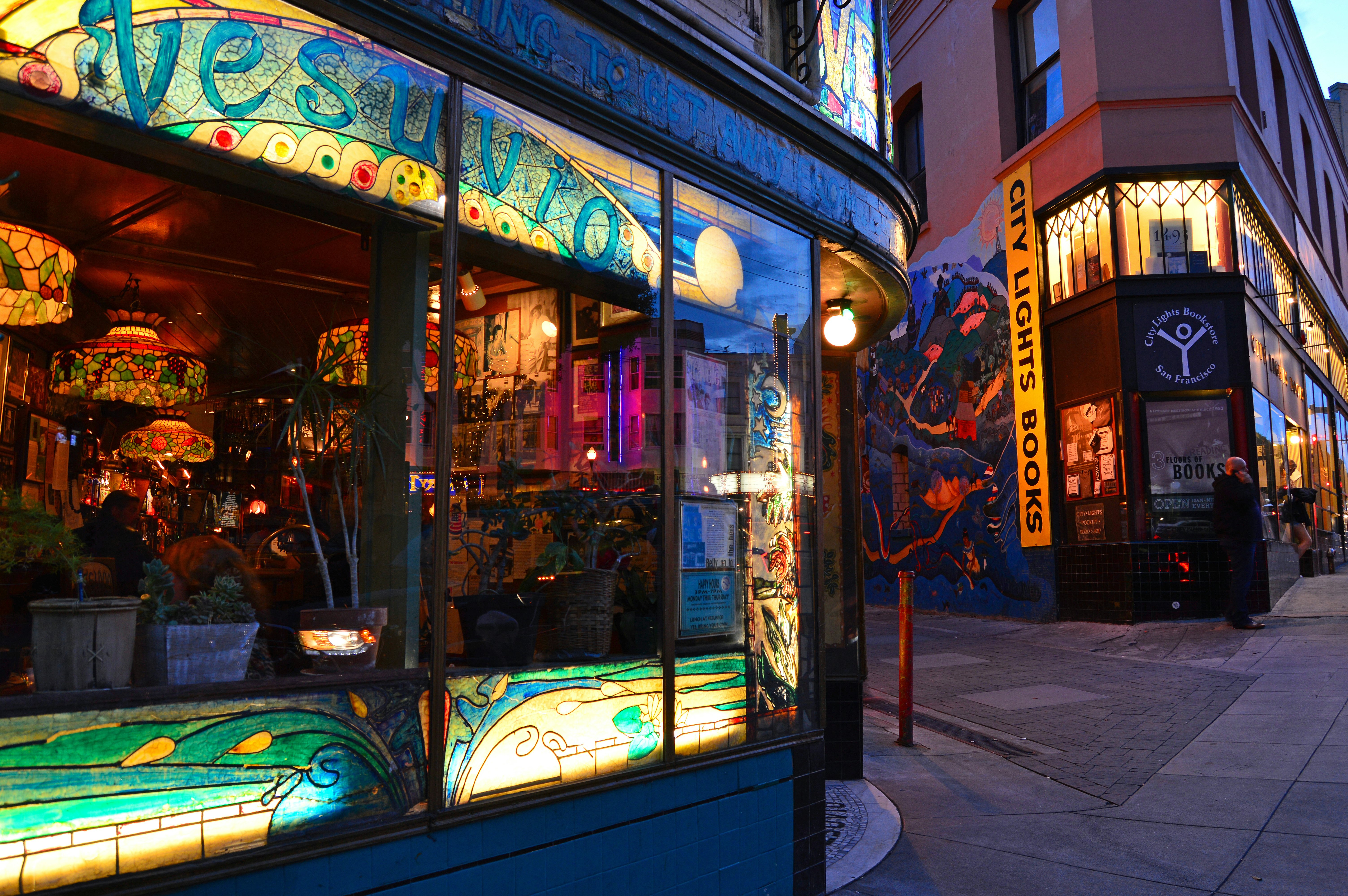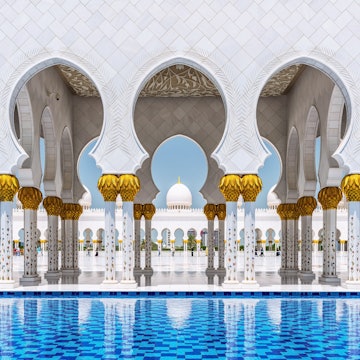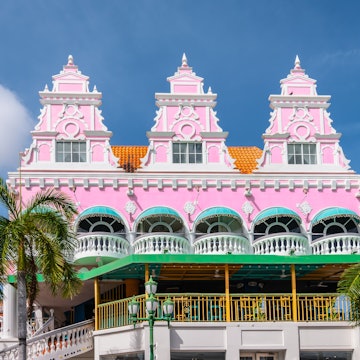

San Francisco offers plenty of activities for your long layover. Getty Images
San Francisco is a small city on a seven-by-seven mile grid, which means it’s easy to see a lot of it in a short amount of time.
Visitors can make it from the historic Ferry Building on the Eastside waterfront to a magnificent sunset at Ocean Beach on the west side in a day, experiencing the culture, food and character of major neighborhoods along the way. If you want a more leisurely layover, focus on just a couple parts of the city, perhaps sticking to the greatest hits for first-time visitors. Skip Alcatraz and Angel Island on a layover, though, due to the amount of time they take to visit.
How to get from the airport:
Fortunately, SFO is close to San Francisco proper, and affordable transportation options abound. BART (Bay Area Rapid Transit) trains on the Yellow Line run directly from SFO to various parts of the Bay Area. While the SFO BART station, located outside the International Terminal (G), is walkable from Terminals 1 and 3, the free AirTrain from all terminals is also an option. A BART ride to Powell station in downtown’s Union Square only takes 30 minutes, for a one-way fare of $8.95. Rideshares like Lyft or Uber, and taxis, cost about $25 and up to get to SF.
What should I do with my luggage?
SFO offers luggage storage in the International Terminal at the Airport Travel Agency, and charges anywhere from $7 per hour to $60 per day depending on luggage size. Allow 30 minutes for the process; the office is open 6am-11pm. Bounce, a cheaper storage option, has stations near SFO and in the city, though you'll have to factor in additional time for drop-off and pick-up. If opting for airport luggage storage, pack a change of clothing in a day pack if you don't want to return to the airport until your flight.
Where should I stay if I’m in San Francisco for 24 hours?
SFO has a few nap rooms in the International Terminal to rent for a few hours or overnight, but for the price, opt for a hotel depending on how much sleep is a priority. While downtown SF is quieter now that many people work remotely, the Union Square area is still a good home base for a 24-hour layover, as it offers many accommodation options, proximity to public transit, and walking distance to classic SF visitor destinations like Chinatown and North Beach. Budget travelers should consider hostels like the reputable Hostelling International Downtown SF Hostel, which also offers private rooms. Newly opened or renovated hotels include the Beacon Grand (formerly The Sir Francis Drake), St. Regis or the hip boutique LINE hotel.
How should I get around the city if I’m in San Francisco for 24 hours?
Use a combination of BART and SF-only public transit system MUNI to get around SF, loading funds on a digital Clipper Card on your smartphone (or physical card) that works across public transit platforms, including the ferry and cable cars. A 1-Day Visitor Passport loaded onto your Clipper costs $13 and allows unlimited MUNI rides. Station-less bike share bicycles also dot the the city; riders can book by scanning bike QR codes through the Bay Wheels app. While MUNI does have late-night Owl bus service that runs into the wee hours, the schedule is infrequent, so rideshare services (or taxis) are preferable after midnight.

What should I do with 24 hours in San Francisco?
Early morning:
San Franciscans are an active bunch, but it’s still pretty quiet before weekday rush hour begins around 7am. Enjoy the quiet and possible fog while everyone else is waking up.
Eat:
Head to the Union Square area, specifically the nearly century-old Sears Fine Food on Powell near Post, which serves its famous 18 tiny Swedish pancakes with butter and lingonberry jam (for $3 extra). For a more contemporary SF breakfast, head a couple blocks east to the cozy Heist for one of its famous breakfast burritos, like the house-made chorizo-filled Captain Crunch.
Do:
Hop on either MUNI or BART from Powell station, or the above-ground vintage F Market & Wharves streetcar on Market at 4th or 5th streets, for a 5-minute ride to Embarcadero station.
The clock tower of the Ferry Building will greet you at the intersection of Market Street and The Embarcadero. Before going inside, take a morning stroll (20-45 minutes) southward along on the waterfront, where joggers, cyclists, and sometimes folks on rollerblades whiz past on the flat, stretch lined with palm trees. It’s an easy walk, though also a high traffic area, so be mindful of both cars and bikes. You’ll get a close view of the two-tiered steel San Francisco-Oakland Bay Bridge, which has one of the longest bridge spans in the US, at nearly 4.5 miles total.
Just half a mile south of the Ferry Building is grassy Rincon Park, where a giant bow and arrow sculpture called Cupid’s Span reminds visitors and locals of the lovestruck feeling of being in San Francisco. Rest or meditate here, or keep walking southward for another half mile, where you’ll pass by two of SF’s old, quirky bars – Hi Dive and Red’s Java House. Then loop back north to the Ferry Building.
Mid-Morning:
The sun usually burns off the fog by mid-morning, which feels like a new day.
Eat:
One can’t pass the Ferry Building Marketplace and not sample the bevy of artisanal food inside. While vendors come and go, there will always be a mouth-watering selection, like hot, lilikoi-filled malasadas from Ocean Malasada, Cambodian yellow curry from Lunette, or savory Jamaican beef patties from Peaches Patties.
If it’s a Tuesday, Thursday or Saturday, walk through the Ferry Plaza Farmers Market to get a taste of the plentiful local California produce that makes SF such a culinary capital. Saturday’s market is the largest, with more than 100 vendors wrapping around the building to the large outdoor space behind it. Here you'll find Asian produce like bok choy and bitter melon from Laotian-owned GG Farm, nopales (cactus pads) from Yerena Farms, the famous vegan No Cookie and mini bean pies from Delightful Foods and tasty chilaquiles from Primavera.
Do:
From the Ferry Building, hop back on MUNI or BART for a 12-minute ride to the Montgomery station to visit the stunning SFMOMA (FYI, it's closed on Wednesdays). General admission is $30, though there are occasional Free Community Days; floors one and two of the museum, however, do feature large public art spaces that are always free. If going for ticketed admission, allow roughly two hours to explore the museum, from the ongoing exhibit of wiry Alexander Calder hanging mobiles to temporary exhibitions like “Unity through Skateboarding,” which explores the history of pioneering skaters from marginalized communities.
After the museum, hop on MUNI/BART for one stop back to Powell station (or walk 11 minutes west) and head to the cable car turnaround at Powell and Market street. Single rides on the cable cars cost $8 – pay with your Clipper card (included with a 1-Day Visitor Passport) or buy a ticket in advance at one of these locations. Take the Powell-Hyde line, which runs every 10-20 minutes, to the penultimate stop at Hyde and North Point streets near Ghirardelli Square. The ride takes 15 minutes, and you’ll pass by classic Victorian houses while riding up and down SF’s famous hills.
Skip the tourist-heavy Fisherman’s Wharf, Pier 39 and Ghirardelli Square; instead head to the Hyde and North Point streets intersection for MUNI bus 30 The Presidio. The 16-minute ride west takes you to the new Presidio Tunnel Tops. Enjoy the Tunnel Tops and pop into the Presidio Visitor Center to learn more about this new, impressively designed park.

Afternoon:
As the afternoon approaches, take advantage of the (likely) mild weather and the proactive San Francisco vibe and get outside.
Eat:
Presidio Tunnel Tops hosts a rotating schedule of food trucks as part of the Presidio Pop-Up program, which operate roughly 9am-3pm on weekdays and 9am-5pm on weekends. A few trucks serve food and drinks on weekdays, but upwards of a dozen set up Friday through Sunday: choose from Dungeness crab sandwiches smothered in homemade peanut sauce from Satay by the Bay, Filipino-Mexican burritos by Señor Sisig and Bulgarian banítsa (hand-rolled phyllo rosettes) filled with sheep’s milk cheese from Kuker. There is ample picnic space to eat, and Tunnel Tops will also unveil a new indoor food hall in 2025.
Do:
One of the newest SF parks, Presidio Tunnel Tops was actually built atop and around the Presidio Parkway tunnels, opening up more 14 acres of green space to the public. The gorgeous park, designed by the same firm behind New York City’s innovative High Line, appeals to almost everyone with picnic areas, a large communal campfire pit, a playground made from upcycled materials, a nature education center, the food truck pop-up program, and plenty of programming year-round, from an Intertribal Dance Gathering to a World Arts West Dance Festival.
Tunnel Tops also offers the opportunity to see the Golden Gate Bridge from a new vantage point, plus sweeping views of the adjacent skyline. Roaming around the park can be enough for an afternoon, but if you've got time, head to the Walt Disney Family Museum across the street.
Afterward, walk back to the Mason St.-Tunnel Tops stop and hop on MUNI bus 30 Caltrain Depot to Chinatown, riding for 40 minutes and alighting at Stockton and Pacific streets.
Evening:
While many SF residents now work from home, happy hour is still a thing, with dinner times bumped up a little earlier since 2020. Food is important to locals, and the number of restaurants continues to grow. There are also plenty of live theater shows, cabarets, concerts, independent movie theaters and more at night. Note that many restaurants close by 9pm these days, but night owls still have plenty of options in neighborhoods that skew younger, like the Mission and Hayes Valley, parts of Chinatown and around the nightclubs in SoMa.
Eat:
While Chinatown classics like the seafood restaurant R&G Lounge and old-school Chinese diner Capital make up the backbone of Chinatown, new restaurants keep the neighborhood moving into the future. Four Kings is the new brick-and-mortar for the previously roving pop-up by two alums of the Michelin-starred Mister Jiu’s. Hong Kong diner dishes like fried pork chops over rice get a fine dining glow-up in a nostalgic ‘90s Canto-pop ambiance. Reservations can be hard to book online, though there are typically same-day slots for dinner after 8pm or 9pm, plus bar seating and a few tables saved for walk-ins.
If you want a more casual meal without the wait, try the newer, bigger location of Hon’s Wun-Tun House on Washington Street, where freshly made shrimp-and-pork wontons are served on a bed of chewy egg noodles, all bathed in a steaming hot chicken broth and dotted with bright green scallions.
Do:
If you arrive in Chinatown by 3pm, grab at $12 ticket to the Chinese Historical Society’s popular exhibit, “We are Bruce Lee: Under the Sky, One Family.” While the Showgirl Magic Museum on Waverly Place is only open on Saturdays 2-6pm and requires an advanced reservation (admission-free, but is donation-based), it’s a rare glimpse into the swinging SF Chinatown burlesque and nightclub scene from the 1940s-1970s, with former showgirls running the museum.
The Golden Gate Fortune Cookie Factory in Ross Alley stays open until 6:30pm on weekdays and 7pm on weekends; watch fortune cookies being folded by hand, and enjoy plenty of free samples. The soon-to-be-remodeled and possibly renamed Portsmouth Square Park is great for people-watching, whether it’s an ensemble of locals playing Chinese instruments, old folks playing chess, or groups doing Tai Chi exercises. If you’re looking for an evening show, the historic Great Star Theater on Jackson Street offers traditional Chinese opera and film festivals, plus burlesque, comedians, book launches and more.

After dark:
SF gets quiet after midnight, if not earlier. Still, the city has been offering more late-night options, and nightlife lovers can always sniff out an afterparty or two.
Eat:
Late-night dining in SF has returned to a degree post-pandemic. If you still find yourself in Chinatown, late night eats abound: Yuet Lee serves Cantonese stir-fried classics until 11pm, and Taishan stays open until 3am. If you're in neighboring North Beach, go to Sam’s on Broadway and Columbus for classic burgers and fries.
If bar hopping along Polk Gulch near the Tenderloin, try the queer-friendly, Portuguese-inflected Grubstake Diner that’s open until 3am on weekdays and 4am on weekends, or the 24-hour Bob’s Donuts for melt-in-your mouth apple fritters. If the Castro is more your speed, Orphan Andy’s serves breakfast until 9:45pm on weeknights, and stays open 24 hours Thursdays through Saturdays.
Many taquerias in the Mission stay open late to serve the bar crowd, like El Farolito and La Taqueria serving hefty Mission-style burritos, or various street vendors slinging bacon-wrapped hot dogs. ABV serves food until midnight. If you're bar hopping southward on Mission Street and end up in Bernal Heights, neighborhood favorite Emmy’s Spaghetti Shack just started serving dinner until midnight on Fridays and Saturdays.
If you want something closer to Union Square, the Hinodeya Ramen location on O’Farrell at Powell serves high quality ramen until 1:30am.
Do:
Staying in Chinatown for the evening? Go to the kitschy Li Po Cocktail Lounge, with its distinctive lantern-shaped neon sign and trademarked Chinese Mai Tai that put Anthony Bourdain under the table. Down the block on Grant Avenue is the less touristy Buddha Lounge, with a bartender who will play dice with you if asked. The Lion’s Den off Grant near Jackson opened in the vein of former night club Forbidden City, drawing an eclectic crowd for a mixture of live bands and DJs.
Drift just north of Chinatown to North Beach for more nightlife. Take a literary break in the legendary Beat Generation-born City Lights bookstore, which stays open until 10pm. Then head next door to Vesuvio Cafe or across the street to Specs for bohemian bar vibes. More adventurous visitors can check out the strip clubs across just up the street on Broadway, with the Condor being the most historic of the bunch, claiming the title of first topless club in the city. Even just a walk up and down the block to look at the neon signs and get solicited by the bouncers and promoters can be fun.
If nightclubs and dancing are more your thing, SoMa is still the main nightclub district, home to Cat Club known for its ‘80s goth and New Wave nights, Monarch and its basement-level dance floor, and the five-story 1015 Folsom with a different genre of music on each floor. Most open until 2am or 3am on weekends. If you’re trying to stay up all night and want after-hours spots, ask a bartender, bouncer, or club regular where to go, as some parties rove around and may be off-the-books.
















